Choosing a cooking oil can be confusing – here we examine the merits of some of the most popular varieties
January 13, 2016
Most of us have at least a few bottles of cooking oil in our kitchen, but we may not always know what to do with them. Should you fry a steak in olive oil? Does peanut oil work for pastries? Is there anything you can’t do with canola oil?
If all the options confuse you, don’t worry. For the average home cook, there’s no need to own a wide array of cooking oils, according to Willie Loh, vice president of marketing development for Cargill’s fats and oils specialties business.
“Most people are perfectly fine with a couple basic oils,” he says. “You’ll want an all-purpose oil such as soybean, canola, corn or sunflower oil that you use for standard cooking or dressings. If you do a lot of shallow pan frying, go with something like a peanut oil. And then you’ll want an oil for seasoning, to put some flavor in your food.”
For flavor, extra virgin olive oil, sesame oil or even truffle oil will do the trick, he says. “But you may not want to cook with those oils, because the heat can make the flavor go bad, and it will smoke like crazy.”
Specific uses of oils are very culturally dependent, and often stem from tradition and historic availability.
Here we break down the attributes of some of the most popular cooking oils around the world, as well as Cargill’s role in getting them to your kitchen.
Cooking oils
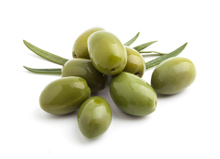 Olive oil is derived from the fruit of the olive tree. Because it’s high in monounsaturated fat, it has a reputation as being healthy. The U.S. allows a qualified health claim on olive oil, indicating that it may reduce the risk of coronary heart disease. Most people have heard of “extra virgin” olive oil, which is produced from the olive’s first pressing.
Olive oil is derived from the fruit of the olive tree. Because it’s high in monounsaturated fat, it has a reputation as being healthy. The U.S. allows a qualified health claim on olive oil, indicating that it may reduce the risk of coronary heart disease. Most people have heard of “extra virgin” olive oil, which is produced from the olive’s first pressing.
A staple in the Mediterranean diet, olive oil is ideal to add flavor to cold dishes and to sprinkle on cooked foods, but can lose its flavor and health benefits when heated up. Regular olive oil tends to be more heat-resistant than the “extra virgin” variety.
Cargill distributes bottled private label olive oil in some European markets. The company also recently acquired theLeonardo® Olive Oil business, a pioneer in establishing the popularity and use of olive oil in India. In North America, Cargill markets olive oil products under the Filippo Berio Culinary Selection® brand (a registered trademark of Societa Per Azioni Lucchese Olli E Vinl) for foodservice.
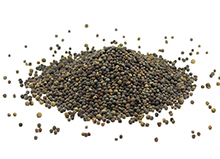 Canola oil, also called rapeseed oil in Europe (low-erucic variety), comes from a bright yellow, flowering plant that was especially bred in Canada in the 1970s. The name combines ‘Can(ada)’ and ‘ola’ for oil. Canola oils are high in omega-3 fatty acids.
Canola oil, also called rapeseed oil in Europe (low-erucic variety), comes from a bright yellow, flowering plant that was especially bred in Canada in the 1970s. The name combines ‘Can(ada)’ and ‘ola’ for oil. Canola oils are high in omega-3 fatty acids.
Canola oils are some of the most widely used cooking oils in the world. With a low flavor profile and high heat tolerance, they’re extremely versatile. They can go on a salad and into a deep fryer. High-oleic varieties provide even more heat tolerance for deep-frying.
Cargill originates and refines canola oils in several geographies. In North America and Australia, Cargill breeds and originates high-oleic canola varieties to produce a range of specialty oils for the food industry that are branded as Clear Valley®.
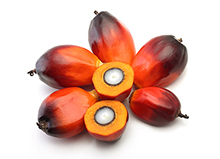 Derived from the fruit of the oil palm plant, palm oil is the world’s most widely used and versatile vegetable oil. Palm oil from the fruit’s mesocarp is reddish because of its high
Derived from the fruit of the oil palm plant, palm oil is the world’s most widely used and versatile vegetable oil. Palm oil from the fruit’s mesocarp is reddish because of its high
beta-carotene content, as opposed to the clear palm kernel oil derived from the kernel of the same fruit.
Both palm oil and palm kernel oil maintain good cooking properties at high temperatures, which make them versatile. Palm oil is more commonly used in home cooking than palm kernel oil. Palm oil fractions are ideal for chocolates, confectioneries and cosmetics.
Cargill owns and operates five palm plantations in Indonesia, as well as 12 palm oil refineries across the world that buy, refine, process and market palm products from its own and other plantations. An industry leader in building a transparent and sustainable supply chain, Cargill is committed to responsible, deforestation-free palm oil.
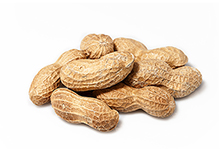 Made from peanuts, peanut oil is high in monounsaturated fat. It’s yellow in its cold-pressed form and nutty in flavor.
Made from peanuts, peanut oil is high in monounsaturated fat. It’s yellow in its cold-pressed form and nutty in flavor.
Peanut oil’s high heat tolerance and distinct flavor profile make it excellent for frying, roasting and sautéing. Because it doesn’t absorb the taste of food, it’s also very durable as a deep frying oil.
In Europe, Cargill refines peanut oil that is sold for use in home cooking and in artisanal bakeries. Cargill also refines peanut oil in the United States.
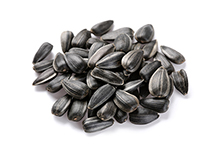 Derived from the seeds of the sunflower plant, sunflower oil has a slight amber color and a high smoke point. High in vitamin E, its flavor profile is distinct, but not overly pronounced.
Derived from the seeds of the sunflower plant, sunflower oil has a slight amber color and a high smoke point. High in vitamin E, its flavor profile is distinct, but not overly pronounced.
Sunflower oil works well for frying, especially the high-oleic variety. It’s widely used for snack foods such as potato chips, but it also works on salads.
Cargill originates and refines sunflower oil in several regions, including the Americas, Europe and China.
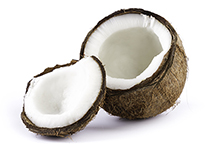 Coconut oil comes from copra, the dried coconut kernel. It’s a very stable oil because it is high in saturated fat. Its flavor has been described as nutty with a touch of sweetness. It has a sharp melting profile, which means it melts rapidly to deliver a good mouthfeel.
Coconut oil comes from copra, the dried coconut kernel. It’s a very stable oil because it is high in saturated fat. Its flavor has been described as nutty with a touch of sweetness. It has a sharp melting profile, which means it melts rapidly to deliver a good mouthfeel.
Coconut oil is good for applications such as ice cream, ice cream coatings, confectionery and baked goods. In North America, it has become increasingly popular as a home cooking oil. It’s also used in soap and personal care products.
Cargill owns and operates several copra crush facilities in the Philippines and two in Indonesia, as well as refineries around the world that buy, refine, process and market coconut oil. The company has been leading efforts in origin countries to train farmers on best practices, such as drying techniques.
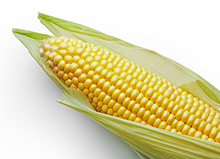 Corn oil is extracted from the kernels of the corn plant. It’s high in vitamin E. Inexpensive and abundant in North and South America, it’s more of a niche product in some other regions, such as Europe.
Corn oil is extracted from the kernels of the corn plant. It’s high in vitamin E. Inexpensive and abundant in North and South America, it’s more of a niche product in some other regions, such as Europe.
Corn oil is an all-around cooking oil with a neutral taste and high heat tolerance, which makes it good for frying and sautéing.
Cargill originates and refines corn oil in many places around the world, including the Americas. In Brazil, Cargill offers a line of popular consumer-branded oils called Liza®, which includes corn oil, among other varieties.
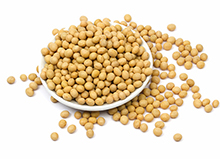 Derived from the seeds of the soybean plant, soybean oil contains omega-3 fatty acids and vitamin E.
Derived from the seeds of the soybean plant, soybean oil contains omega-3 fatty acids and vitamin E.
Soybean oil has a neutral flavor profile, making it a great all-around oil for a variety of applications. It’s versatile: it can be used for frying, baking, and making sauces and dressings.
Cargill is a global purchaser, processor and refiner of soybeans. It has extensive operations in the U.S. and Brazil. Rapid soy expansion in Brazil has created a greater need to protect the Amazon ecosystem, and Cargill is working with others in the industry to improve the sustainability of the supply chain.
The next big oil
Right now, coconut oil is all the rage in North America. Touted for its many uses – from cooking to skincare – it’s quickly become one of the most sought-after oils
in the grocery store.
“What we’ve seen in our consumer research is that attitudes are shifting quickly when it comes to oils,” said Lou Anne Koerschner, marketing manager for Cargill fats and oils specialties. “We’re always trying to anticipate the next big trend.”
In many places, oils’ health attributes have become a big driver behind purchase decisions. A 2014 consumer survey conducted by Cargill revealed that U.S. shoppers are paying closer attention to labels and making decisions based on health claims.
To help food manufacturers boost the nutritional benefits of their products, Cargill launched IngreVita™, a blend of high oleic canola oil, fish oil and proprietary antioxidants. The oil delivers long-chain omega-3s (EPA and DHA), essential nutrients that play an important role in heart health and brain development.
 Olive oil is derived from the fruit of the olive tree. Because it’s high in monounsaturated fat, it has a reputation as being healthy. The U.S. allows a qualified health claim on olive oil, indicating that it may reduce the risk of coronary heart disease. Most people have heard of “extra virgin” olive oil, which is produced from the olive’s first pressing.
Olive oil is derived from the fruit of the olive tree. Because it’s high in monounsaturated fat, it has a reputation as being healthy. The U.S. allows a qualified health claim on olive oil, indicating that it may reduce the risk of coronary heart disease. Most people have heard of “extra virgin” olive oil, which is produced from the olive’s first pressing.
 Canola oil, also called rapeseed oil in Europe (low-erucic variety), comes from a bright yellow, flowering plant that was especially bred in Canada in the 1970s. The name combines ‘Can(ada)’ and ‘ola’ for oil. Canola oils are high in omega-3 fatty acids.
Canola oil, also called rapeseed oil in Europe (low-erucic variety), comes from a bright yellow, flowering plant that was especially bred in Canada in the 1970s. The name combines ‘Can(ada)’ and ‘ola’ for oil. Canola oils are high in omega-3 fatty acids. Derived from the fruit of the oil palm plant, palm oil is the world’s most widely used and versatile vegetable oil. Palm oil from the fruit’s mesocarp is reddish because of its high
Derived from the fruit of the oil palm plant, palm oil is the world’s most widely used and versatile vegetable oil. Palm oil from the fruit’s mesocarp is reddish because of its high Made from peanuts, peanut oil is high in monounsaturated fat. It’s yellow in its cold-pressed form and nutty in flavor.
Made from peanuts, peanut oil is high in monounsaturated fat. It’s yellow in its cold-pressed form and nutty in flavor. Derived from the seeds of the sunflower plant, sunflower oil has a slight amber color and a high smoke point. High in vitamin E, its flavor profile is distinct, but not overly pronounced.
Derived from the seeds of the sunflower plant, sunflower oil has a slight amber color and a high smoke point. High in vitamin E, its flavor profile is distinct, but not overly pronounced. Coconut oil comes from copra, the dried coconut kernel. It’s a very stable oil because it is high in saturated fat. Its flavor has been described as nutty with a touch of sweetness. It has a sharp melting profile, which means it melts rapidly to deliver a good mouthfeel.
Coconut oil comes from copra, the dried coconut kernel. It’s a very stable oil because it is high in saturated fat. Its flavor has been described as nutty with a touch of sweetness. It has a sharp melting profile, which means it melts rapidly to deliver a good mouthfeel. Corn oil is extracted from the kernels of the corn plant. It’s high in vitamin E. Inexpensive and abundant in North and South America, it’s more of a niche product in some other regions, such as Europe.
Corn oil is extracted from the kernels of the corn plant. It’s high in vitamin E. Inexpensive and abundant in North and South America, it’s more of a niche product in some other regions, such as Europe. Derived from the seeds of the soybean plant, soybean oil contains omega-3 fatty acids and vitamin E.
Derived from the seeds of the soybean plant, soybean oil contains omega-3 fatty acids and vitamin E.